Case 11
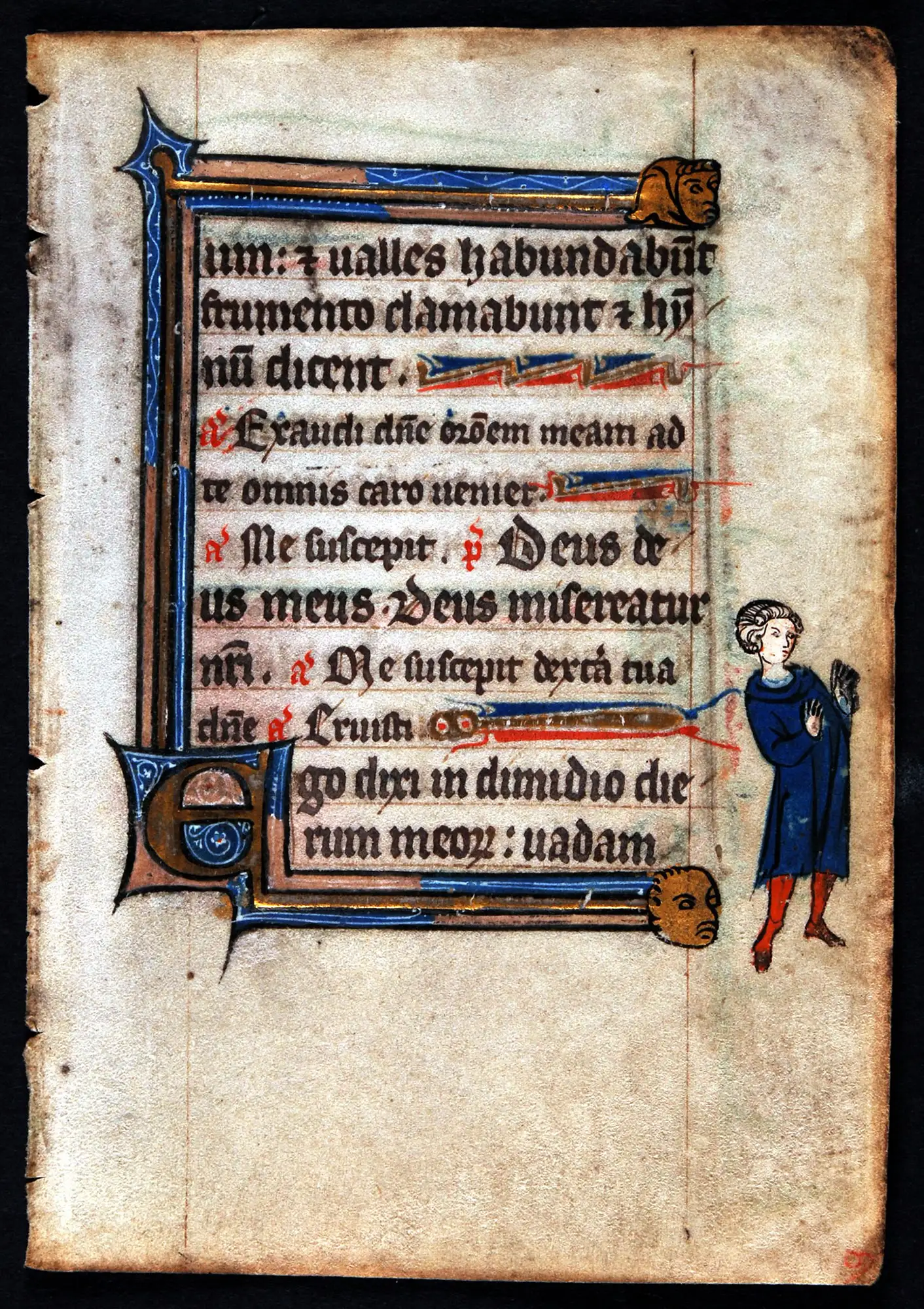
Single leaf from a Book of Hours, in Latin. Flanders, ca. 1300. Reed MSF9.
This early Flemish leaf has a simple, solid linear border in pink, blue and gold, with white tracery, which extends out from the decorated initial. The ends terminate with a human and a lion mask in gold. This page is from the so-called ‘Ghistelles Hours’ - a manuscript famous for the figures in the margin – here a dancing man.
The text is part of Lauds from the Office of the Dead.
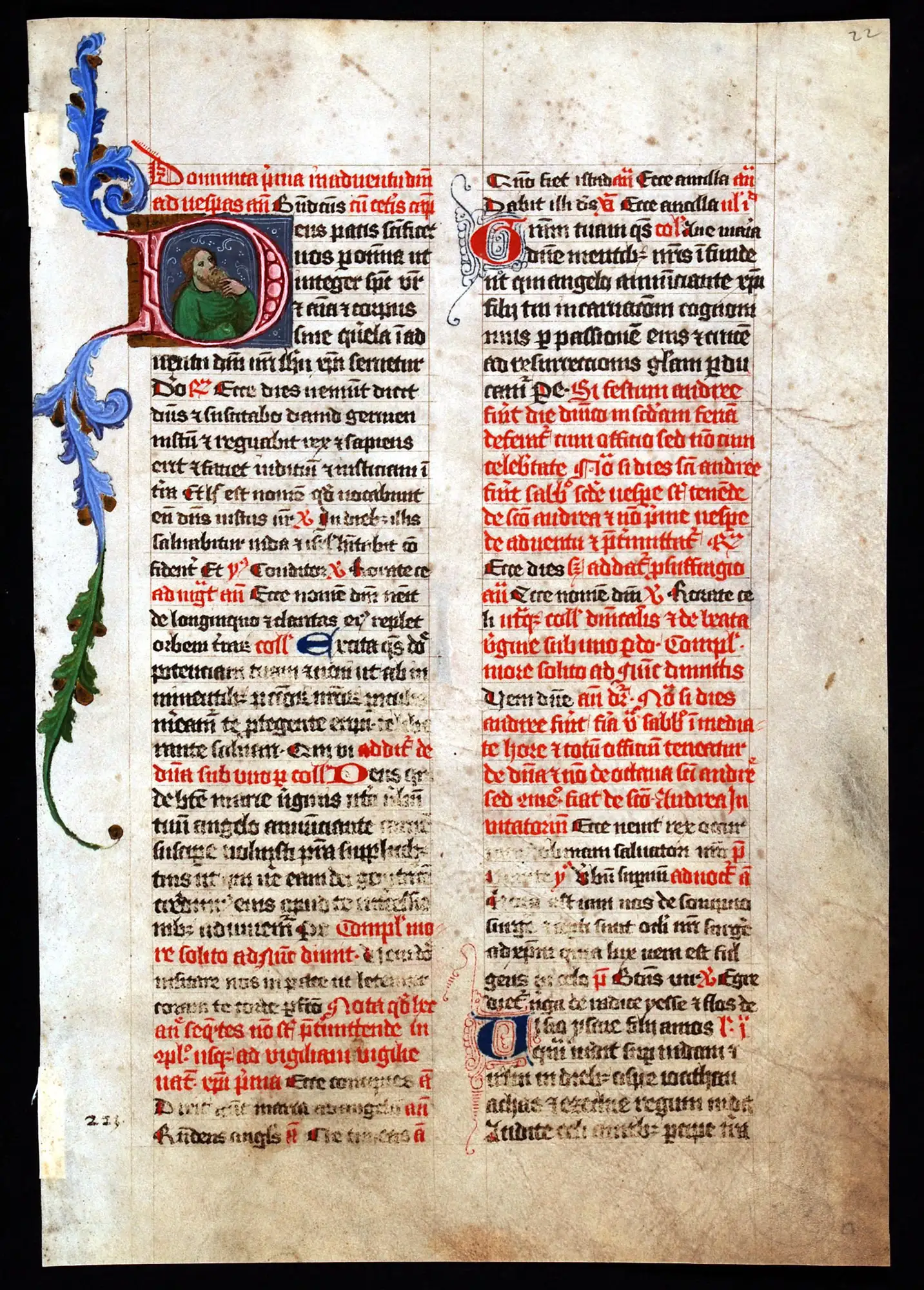
Single leaf from a Breviary, in Latin. Bohemia, between 1420 and 1450. Reed MSF63.
This leaf contains a five-line illuminated initial painted in pink on a burnished gold and grey ground, infilled with a half-length figure dressed in a green tunic and stroking his thick beard; with partial borders of blue and green acanthus foliage extending into the margin.
The text is from the first Sunday in Advent.
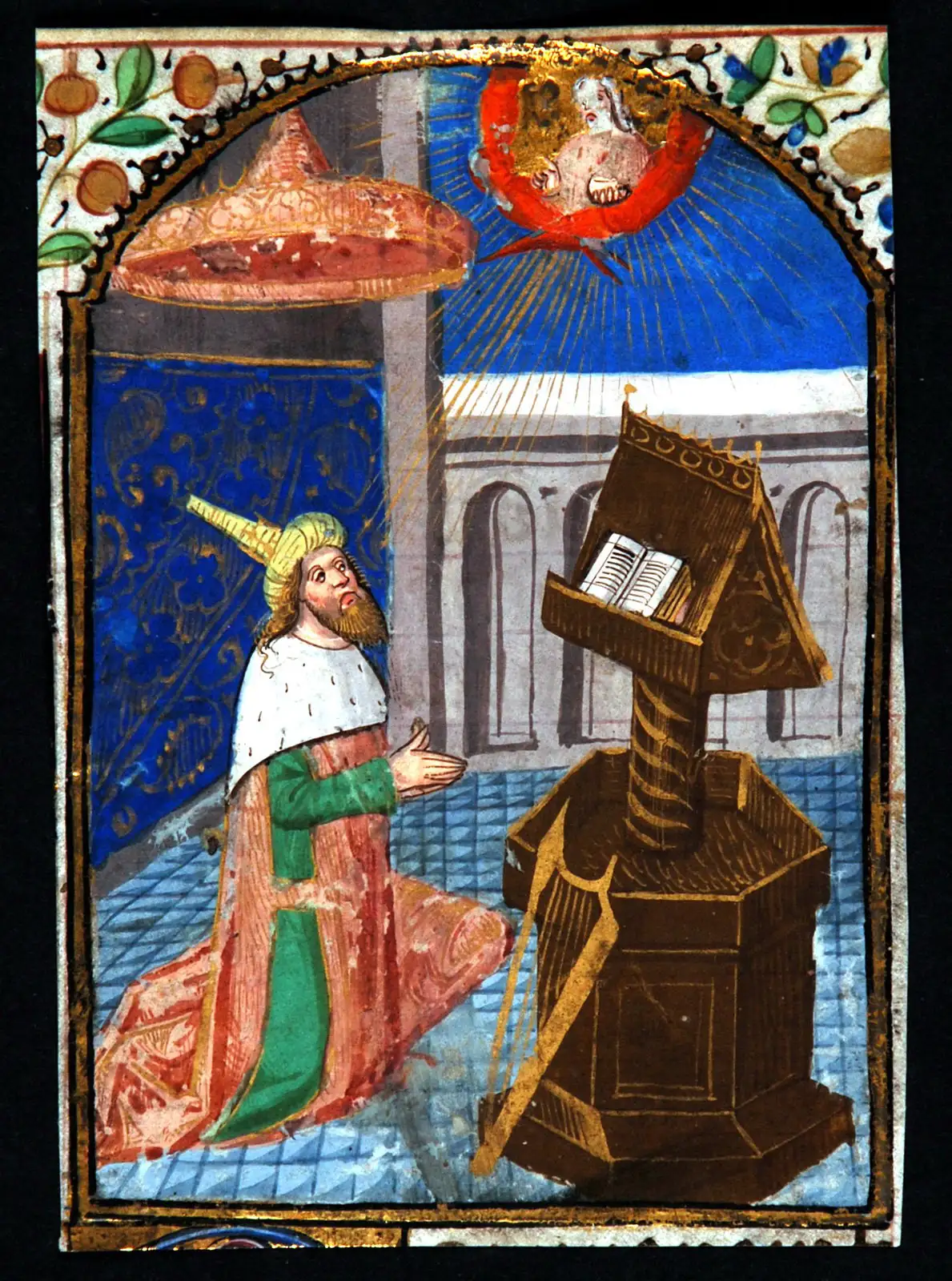
Three cuttings from a Book of Hours, in Latin. France (Paris), late fifteenth century. Reed MSF45.
One side of each of these three fragments has a large miniature in an arched compartment, with part of floral acanthus borders visible at the top and traces of initials below the miniatures. These three miniatures show King David at prayer, the Crucifixion and a burial scene.
The miniatures are in the style associated with Maitre Francois, active in Paris ca.1465-1490. They are from a book cut up and sold at the time of the French Revolution. They were purchased in 1796 by Daniel Burckhardt-Wildt, silk ribbon manufacturer of Basel, and mounted in an album which remained in the family until 1983.
The miniatures preceded the openings of the penitential psalms, the Hours of the Cross, and the Office of the Dead respectively.

Three cuttings from a Book of Hours, in Latin. France (Paris), late fifteenth century. Reed MSF45.
Open image in new window
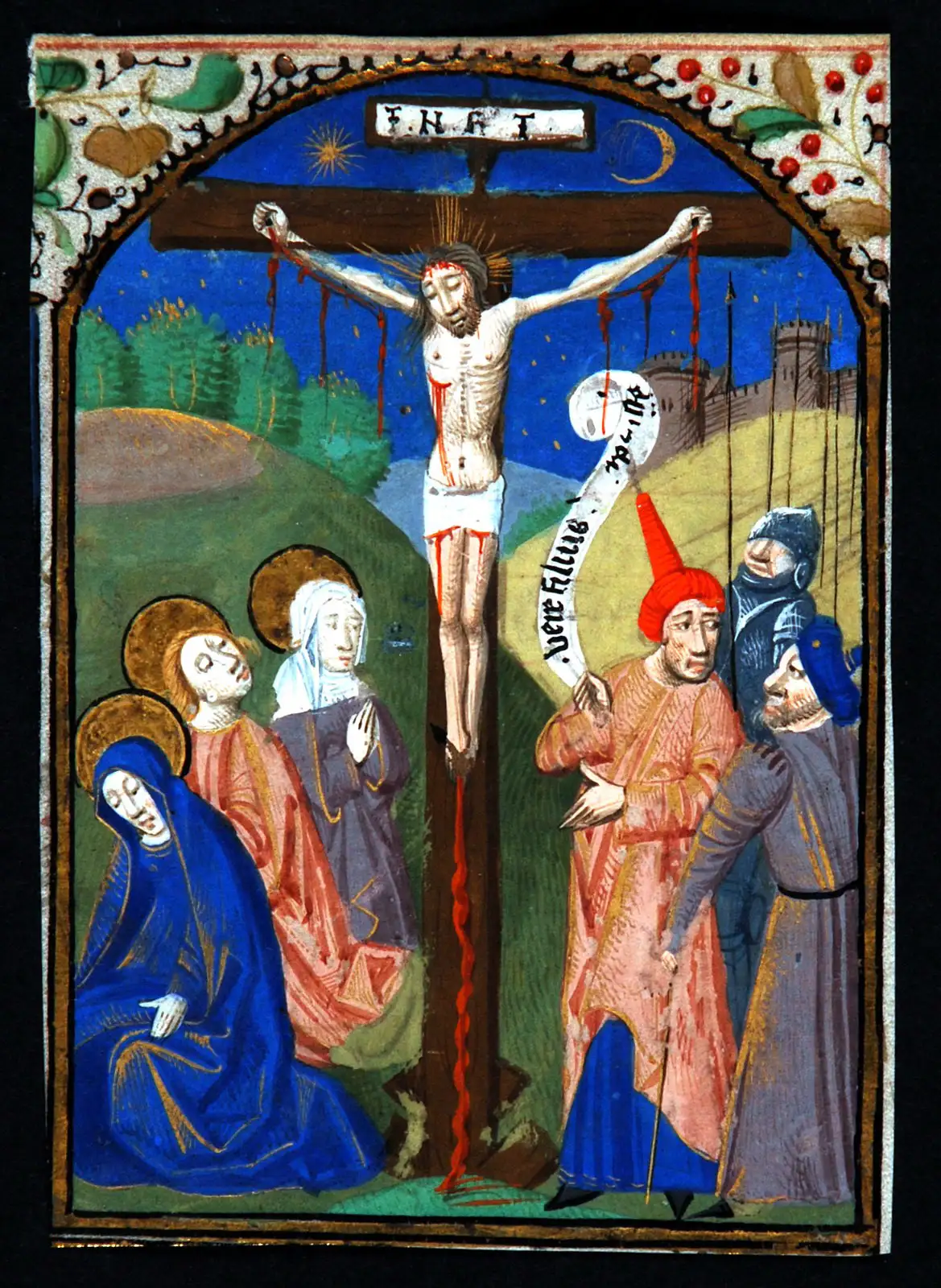
Three cuttings from a Book of Hours, in Latin. France (Paris), late fifteenth century. Reed MSF45.
One side of each of these three fragments has a large miniature in an arched compartment, with part of floral acanthus borders visible at the top and traces of initials below the miniatures. These three miniatures show King David at prayer, the Crucifixion and a burial scene.
The miniatures are in the style associated with Maitre Francois, active in Paris ca.1465-1490. They are from a book cut up and sold at the time of the French Revolution. They were purchased in 1796 by Daniel Burckhardt-Wildt, silk ribbon manufacturer of Basel, and mounted in an album which remained in the family until 1983.
The miniatures preceded the openings of the penitential psalms, the Hours of the Cross, and the Office of the Dead respectively.

Three cuttings from a Book of Hours, in Latin. France (Paris), late fifteenth century. Reed MSF45.
Open image in new window
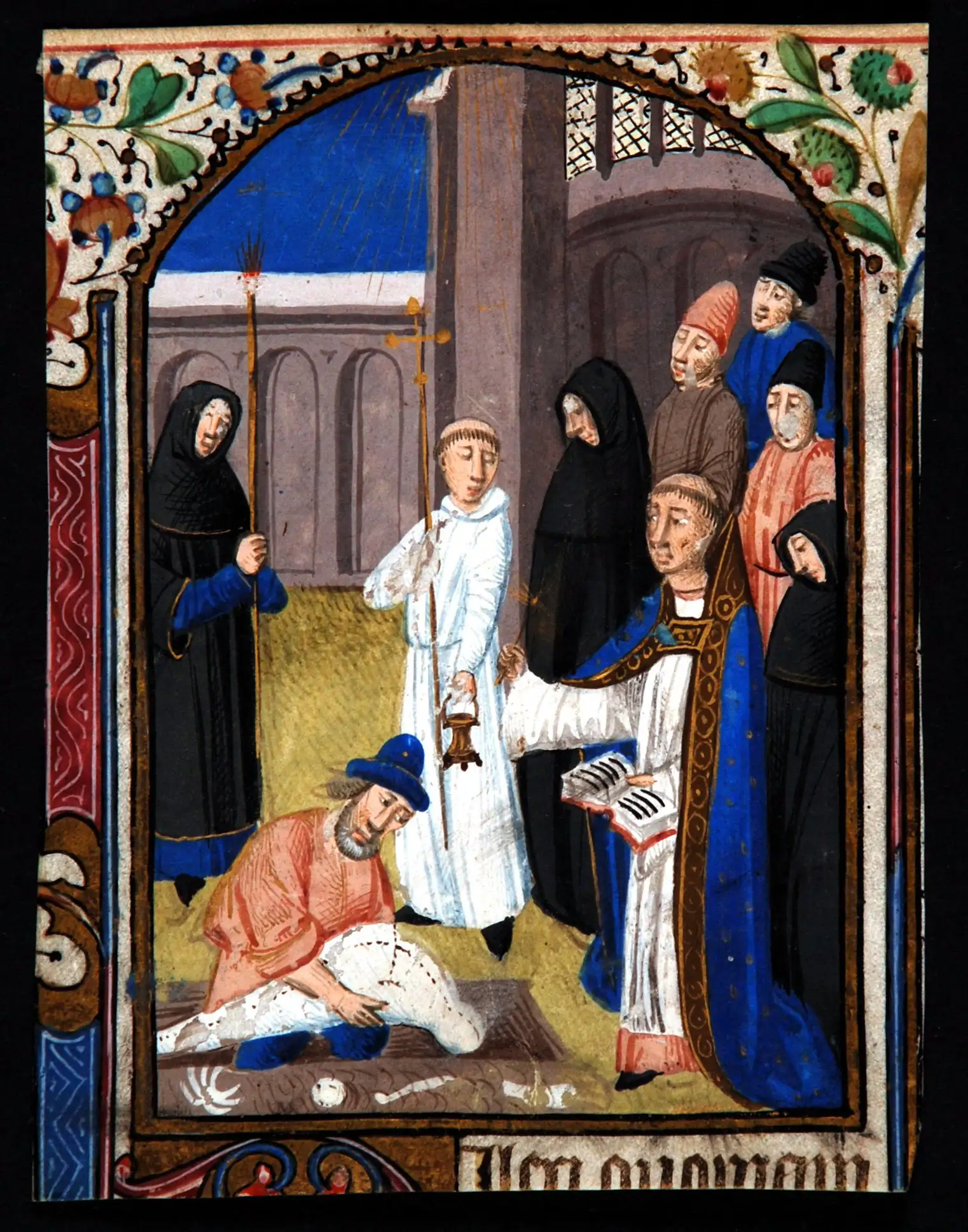
Three cuttings from a Book of Hours, in Latin. France (Paris), late fifteenth century. Reed MSF45.
One side of each of these three fragments has a large miniature in an arched compartment, with part of floral acanthus borders visible at the top and traces of initials below the miniatures. These three miniatures show King David at prayer, the Crucifixion and a burial scene.
The miniatures are in the style associated with Maitre Francois, active in Paris ca.1465-1490. They are from a book cut up and sold at the time of the French Revolution. They were purchased in 1796 by Daniel Burckhardt-Wildt, silk ribbon manufacturer of Basel, and mounted in an album which remained in the family until 1983.
The miniatures preceded the openings of the penitential psalms, the Hours of the Cross, and the Office of the Dead respectively.

Three cuttings from a Book of Hours, in Latin. France (Paris), late fifteenth century. Reed MSF45.
Open image in new window
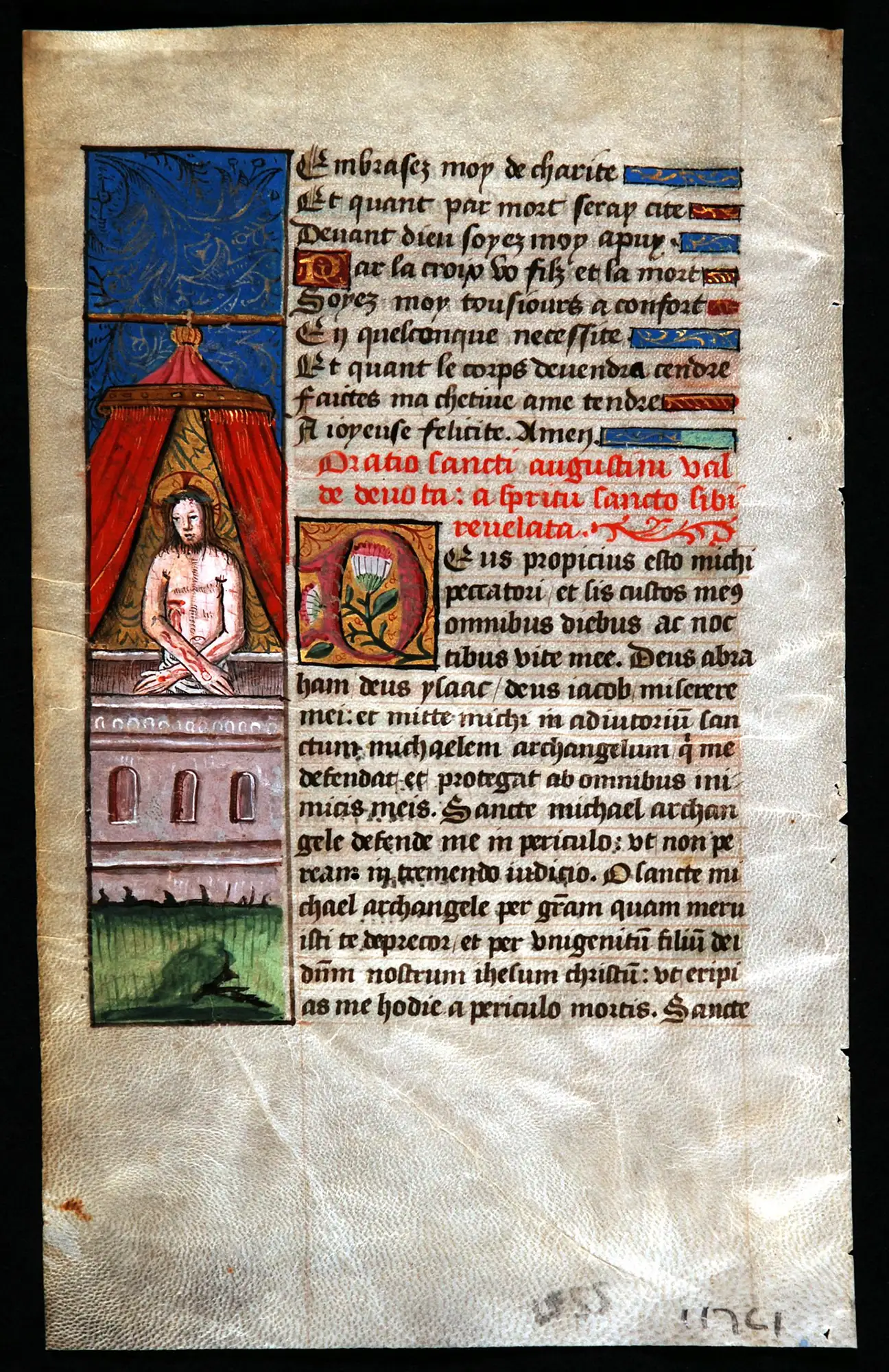
Single leaf from a Book of Hours, in Latin and French. France, early sixteenth century. Reed MSF60.
This leaf contains a five-line initial in red with a thistle design on a gold ground with red tracery. The miniature depicting Christ rising from the tomb and showing the wounds of His Crucifixion also functions as a vertical panel border.
The text contains a Middle French translation of Stabat Mater dolorosa followed by a prayer in Latin for use in Vespers in the twelfth Sunday after Pentecost.
In the eighteenth and nineteenth centuries, manuscripts were often valued more for their miniature paintings than as artefacts per se. Thus, miniatures and large initials were often cut out and sold separately, sometimes framed, as artworks.

Single leaf from a Book of Hours, in Latin and French. France, early sixteenth century. Reed MSF60.
Open image in new window





